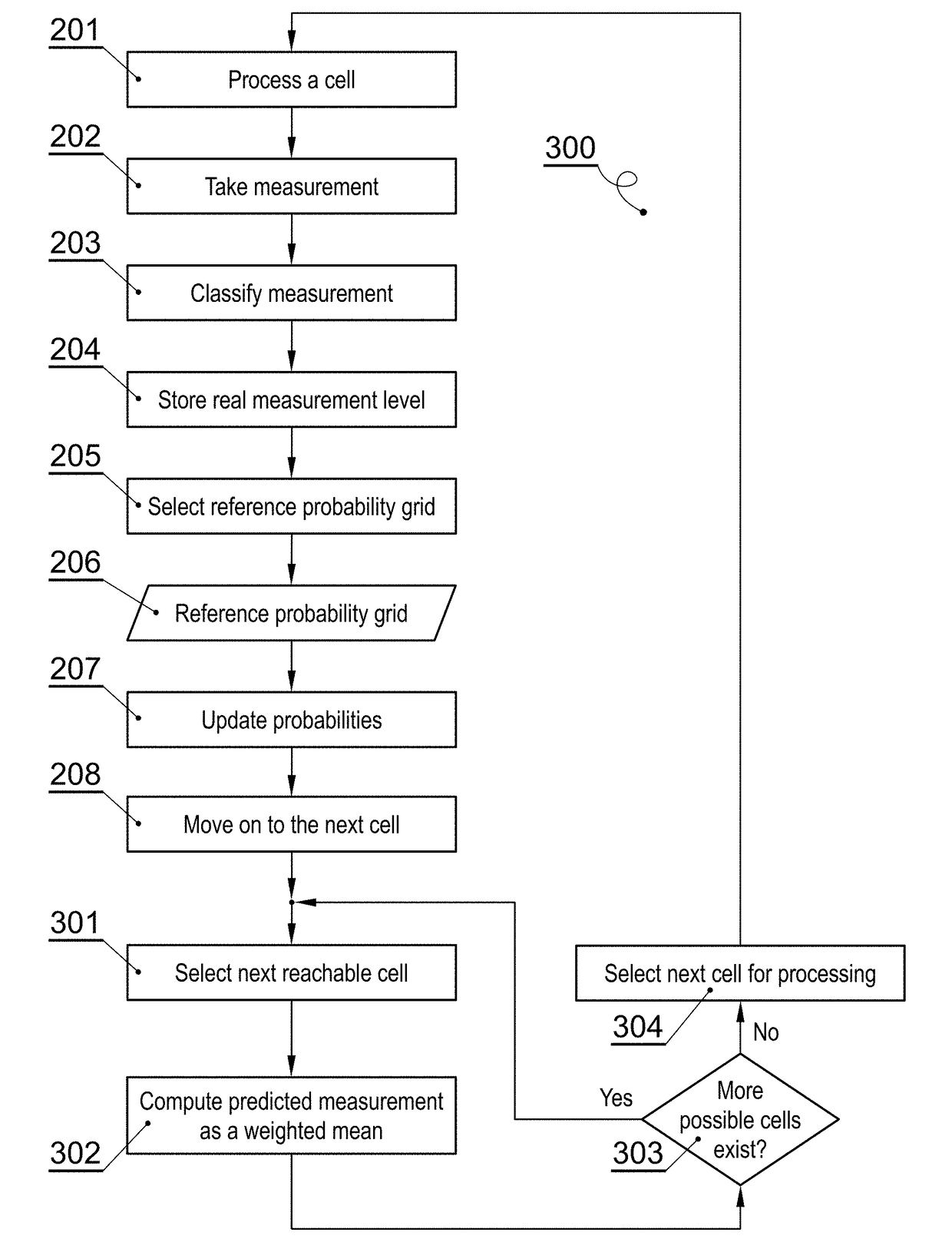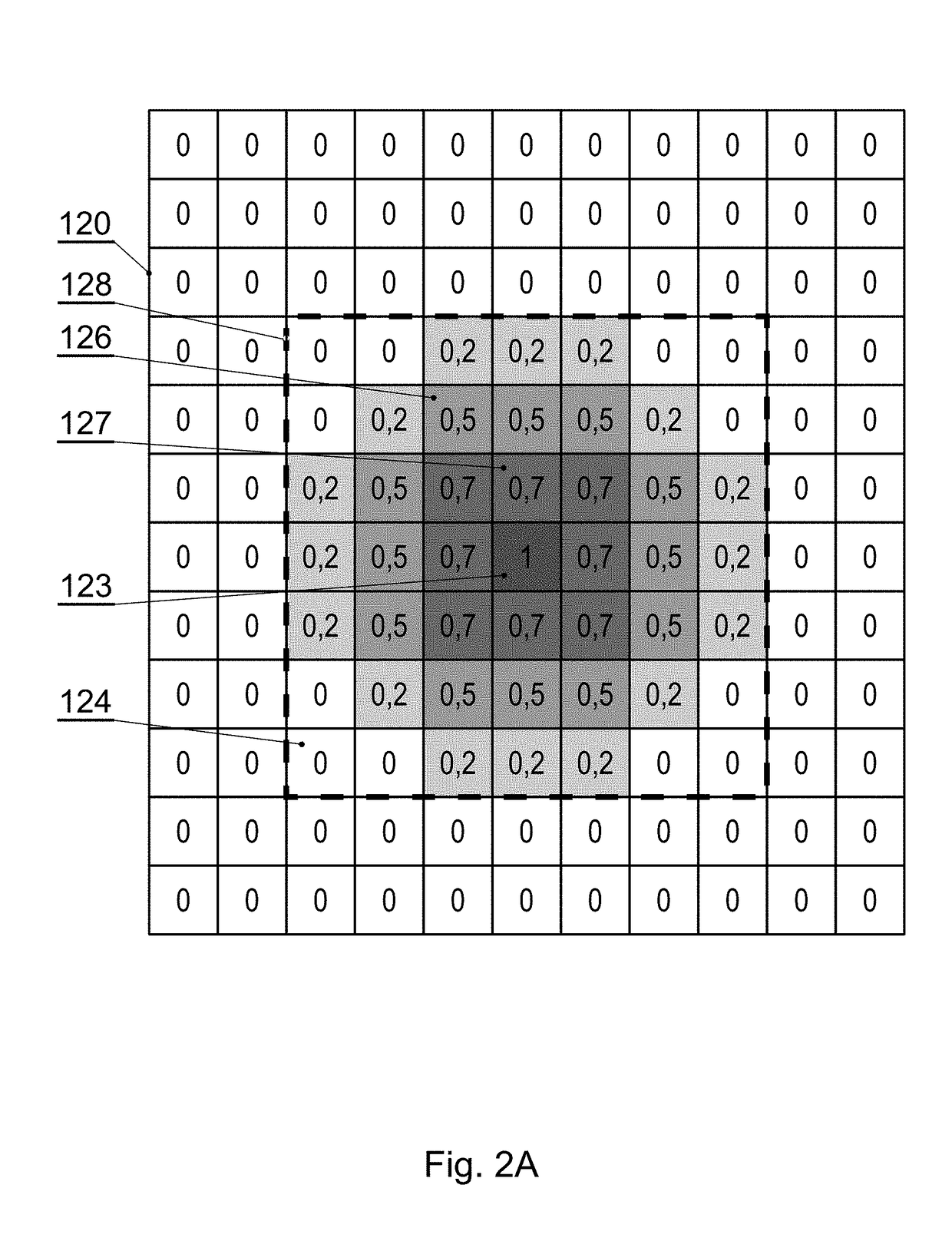System and method for determining an energy-efficient path of an autonomous device
a technology of autonomous devices and paths, applied in the direction of process and machine control, energy saving arrangements, instruments, etc., can solve problems such as unaddressed needs
- Summary
- Abstract
- Description
- Claims
- Application Information
AI Technical Summary
Benefits of technology
Problems solved by technology
Method used
Image
Examples
Embodiment Construction
[0036]The subject of the present invention is to optimize power consumption of such devices by estimations made on the base of the already processed parts of the surface. A person skilled in the art will appreciate that the scope of the present invention is in fact broader and is not limited to a vacuum cleaner or power consumption and that other types of device and other measurable parameters can also be applied.
[0037]For better understanding and clarity the autonomous vacuum cleaner is used as an exemplary device in the description of the present invention and the power consumption is used as an exemplary measured and optimized parameter.
[0038]An exemplary observable fact is that the flooring that the device is moving on can be less optimal towards movement in a particular direction than others. Such exemplary situation is a long ceramic floor tile (20 cm by 100 cm or the like). When all tiles are laid in parallel, the movement of a device with small wheels (up to the diameter of ...
PUM
 Login to View More
Login to View More Abstract
Description
Claims
Application Information
 Login to View More
Login to View More - R&D
- Intellectual Property
- Life Sciences
- Materials
- Tech Scout
- Unparalleled Data Quality
- Higher Quality Content
- 60% Fewer Hallucinations
Browse by: Latest US Patents, China's latest patents, Technical Efficacy Thesaurus, Application Domain, Technology Topic, Popular Technical Reports.
© 2025 PatSnap. All rights reserved.Legal|Privacy policy|Modern Slavery Act Transparency Statement|Sitemap|About US| Contact US: help@patsnap.com



